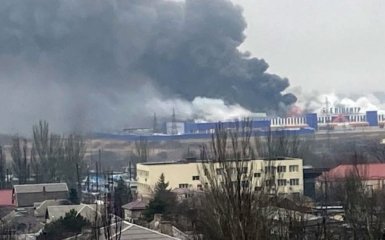According to Petro Andriushchenko, an adviser to the mayor of Mariupol, occupied by the criminal army of the Russian Federation, in the morning, on 13 January, a barracks of the Russian occupiers was hit in one of the city's districts.
What is known about the consequences of the morning explosions in Mariupol
According to Andriushchenko, the barracks of Russian war criminals was hit near the Ilyich International Business Centre in the Kalmius district.
It is quite possible that it was the wreckage of Russian air defence systems. However, immediately after the "nothing happened at all" fire, the occupiers began to move manpower and equipment en masse to the Prymorsky district of Mariupol. A typical game of hide and seek after the explosion," explains Andriushchenko.
At the same time, representatives of the city council of the occupied city noted that after the hit there was increased activity of enemy aircraft.
Andriushchenko also added that in the morning, the occupiers had bombed one of the districts in the port, which they use as a military base.
In addition, Andriushchenko reported that the explosion took place among the occupiers and in Volnovaha.
What is known about the air attack of the Russian army in Ukraine
According to the Air Force Command, the night missile attack on Ukraine cost Russia $239 million.
The enemy released 40 targets over Ukraine:
7 S-300/S-400 anti-aircraft guided missiles
3 shock unmanned aerial vehicles "Shahed-136/131"
6 Kh-47M2 Kinzhal aeroballistic missiles
Up to 12 Kh-101/Kh-555/Kh-55 cruise missiles.
6 Kh-22 cruise missiles.
2 Kh-31P guided air missiles
4 Kh-59 guided air missiles
At the same time, the spokeswoman of the Operational Command "South" Nataliya Humeniuk noted that the storm in the Black Sea did not allow the criminal armies of Russia to launch Kalibr missiles over Ukraine.
The enemy group is practically closed, two units are patrolling in the Black Sea, one in the Sea of Azov. Missile carriers continue to be at base points. Stormy weather did not allow them to be used during this attack,” Natalia Humeniuk noted.
According to her, the mass missile attack of the Russian army at night and in the morning almost bypassed the south of Ukraine.
Humeniuk added that the Kh-101 missile was shot down in the Mykolaiv region.
She suggested that the Russian occupiers are probably trying to test the peculiarities of Ukrainian air defence.
The command of the Air Force noted that more than 20 enemy aircraft during the morning attack were neutralised by Ukrainian EW means and did not reach their targets.
The PS of the Armed Forces explains that the defense industry of the aggressor country produces missiles of increasingly poor quality, and they behave unpredictably, which poses a threat to people and civilian objects.




